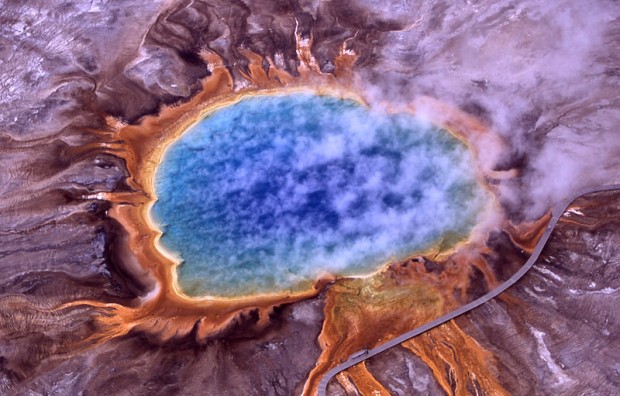According to the indispensable Jason Kottke, NASA has called a press conference for Thursday afternoon at 2 pm to “discuss an astrobiology finding that will impact the search for extraterrestrial life,” according to the press release.
And that’s pretty much all it says. While the press release is tantalizingly short on specifics, it does list several participants, including Mary Voytek, director of NASA’s astrobiology program; Pamela Conrad, astrobiologist at NASA’s Goddard Space Flight Center; James Elser, professor, Arizona State University; Steven Benner, distinguished fellow, Foundation for Applied Molecular Evolution; and Felisa Wolfe-Simon, NASA astrobiology research fellow, U.S. Geological Survey.
Although their specialties are different, the last three scientists pursue evidence of life forms with biochemistry that differs markedly from what we’ve come to associate with life on Earth. While working on astrobiology projects seeking such evidence in planetary environments beyond our own, these researchers focus most intently on the search for so-called “weird life” right here on Earth. Benner and Wolfe-Simon were co-authors (with others) on a 2009 paper in the journal Astrobiology entitled “Signatures of a Shadow Biosphere.” It’s a “hypothesis article”; as such it presents no findings. But the theories it explores are extremely interesting, with every potential to “impact the search for extraterrestrial life.”
The “shadow biosphere” describes the presence of another kind of life resident on Earth with an origin and evolutionary pathway separate from that of the tree of life as we know it, commonly divided today into the Archaea, Eubacteria, and Eukarya, three great domains that cover organisms ranging from the extremophiles colonizing deep ocean vents to bacteria colonizing your gut to the fungi, plants, and animals that populate our daily lives. For all their astounding variety, all such lifeforms share basic characteristics, a suite of chemical, metabolic, and genetic factors that together signal their common origin.
But it’s possible to imagine lifeforms that differ markedly from these familiar prototypes. Science fiction has entertained wild notions of creatures that use silicon in place of carbon or subsists in solvents other than water. But more subtle variations are possible as well (such as organisms that replace phosphates in DNA with chemically analogous arsenic�a special interest of Dr. Wolfe-Simon). “Signatures of a Shadow Biosphere” explores the possibilities of such subtle variations�suggesting novel ways to search for a domain of life which may be very difficult to detect against the “background noise” of the biochemistry we all know and love.
The discovery of such a novel biosphere on Earth would have profound implications. A little-discussed problem in astrobiology and the search for extraterrestrial life arises from the lack of such alternative biospheres here on Earth. The silence of the observable universe (a phenomenon known as the “Fermi Paradox“) is one thing; but the lack of alternative biologies here on Earth, an environment manifestly friendly to the emergence of living systems, is far more troubling. If life only evolved once even in Earth’s ideal conditions, then it might prove exceedingly rare everywhere else. If, on the other hand, life has arisen multiple times, then the search for life beyond Earth’s clement precinct seems much less quixotic.
Researchers involved with Thursday’s announcement have also been working on astrobiology proper; they’ve researched the geochemistry of Mars and the possibilities for life on Saturn’s largest moon, Titan. But if I were to place a bet on the subject of the upcoming press conference, I’d wager (only a penny ante, mind you) that it will involve the discovery of a terrestrial shadow biosphere. Indeed, discovery of such an esoteric domain of life, either in the past or the present, would be tantamount to the discovery of extraterrestrial life�right here on Earth.
 Gearfuse Technology, Science, Culture & More
Gearfuse Technology, Science, Culture & More




I don’t think it is maybe or perhaps but it’s certainly sure that it is…